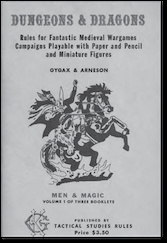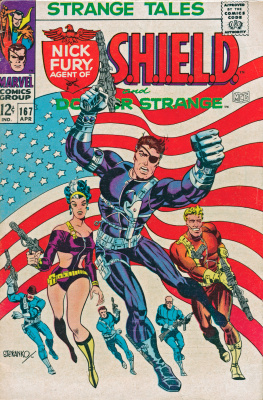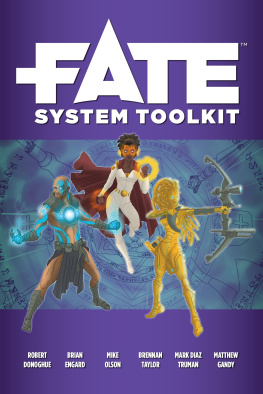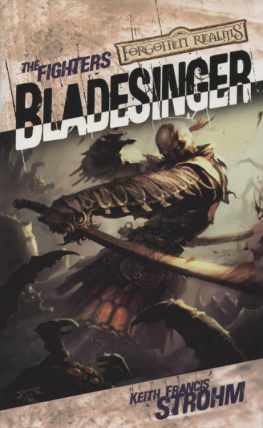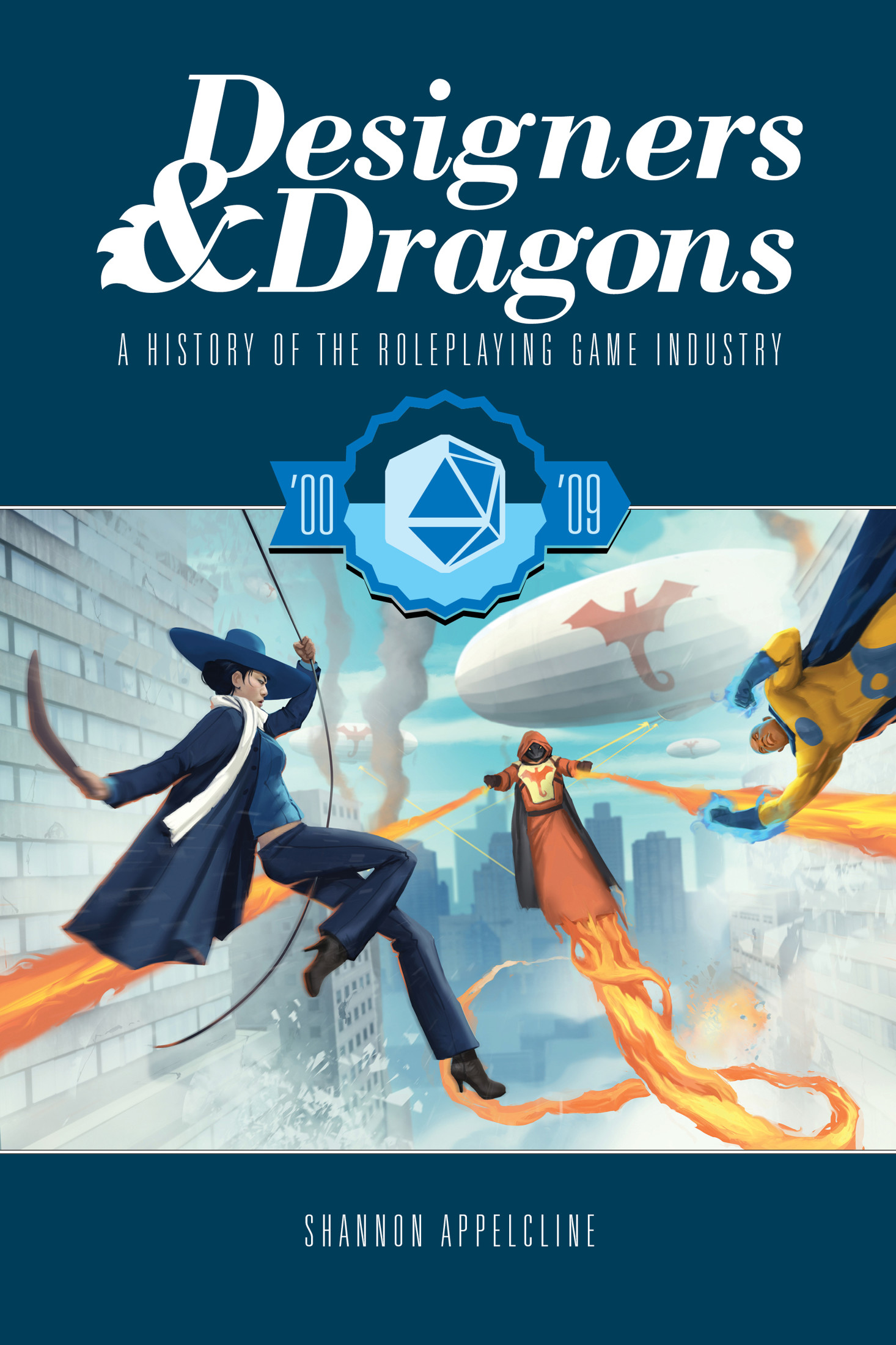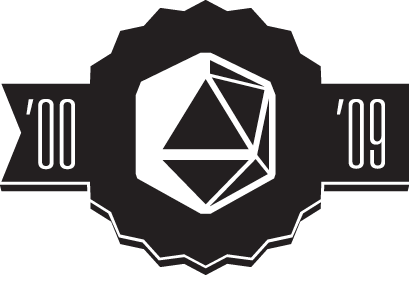Credits
Shannon Appelcline
Author and Researcher
John Adamus
Editor
Karen Twelves
Proofreader
Rita Tatum & Shannon Appelcline
Indexer
Fred Hicks and Adam Jury
Layout
Daniel Solis
Graphic Design
Andrew Bosley
Cover Art
Chris Hanrahan
Business Development
Carrie Harris
Marketing Manager
Sean Nittner
Project Manager
An Evil Hat Productions Publication
www.evilhat.com feedback@evilhat.com
@EvilHatOfficial on Twitter
facebook.com/EvilHatProductions
Designers and Dragons: The 00s
Copyright 2014 Shannon Appelcline
All rights reserved.
First published in 2014 by Evil Hat Productions, LLC.
10125 Colesville Rd #318, Silver Spring, MD 20901.
Evil Hat Productions and the Evil Hat and Fate logos are trademarks owned by Evil Hat Productions, LLC.
All rights reserved.
Softcover: EHP8003 978-1-61317-087-8
Kindle: EHP8003K 978-1-61317-088-5
ePub: EHP8003E 978-1-61317-089-2
Printed in the USA.
All covers, ads, and other images from other publishers remain the property of their respective owners and are used here under fair use provisions for criticism, commentary, and scholarship.
No part of this publication may be reproduced, stored in a retrieval system, or transmitted in any form or by any means, electronic, mechanical, photocopying, recording, or otherwise, without the prior express permission of the publisher.
That said, if youre doing it for personal use, knock yourself out. Thats not only allowed, we encourage you to do it.
For those working at a copy shop and not at all sure if this means the person standing at your counter can make copies of this thing, they can.
This is express permission. Carry on.
On the Oughts
A s the year 2000 dawned, there was a new vigor in the air. The end of the 90s was dampened by a malaise brought on by dwindling RPG sales as former tabletop gamers fled to their computers. All that changed with the release of the third edition of Dungeons and Dragons in the summer of 2000, which brought a surge of optimism into a new century.
The bringer of this optimism was the Open Game License (OGL) that Wizards of the Coast released with their new edition of D&D. The idea behind the OGL was to harness the creativity of the whole roleplaying industry to create products compatible with D&D rather than competing headto-head with the granddaddy of RPGs. This allowed publishers to hook onto the D&D network, propelling sales of some of the best products to unheard of levels for over a decade. In return, all these companies were pushing more and more players towards the D&D Players Handbook and this aided in making the third edition launch one of the most successful ever.
I enter this decade at the tail end of my Wizards of the Coast career. Fresh off the success of the 3rd edition launch, I was shocked when WotC cut me loose right before Christmas in 2000. I missed a lot of the initial excitement of the d20 revolution and the spate of new companies arising to meet the demand for more d20 products. When I started Paizo Publishing in the summer of 2002, I was shocked to see the landscape of publishers changed so drastically. Green Ronin, Goodman Games, Monte Cook Games. Necromancer Games and a host of others were now some of the most successful RPG publishers around.
That would change with the release of the 3.5 rules for D&D. Most publishers of d20 products were caught unawares and left with warehouses full of now obsolete product. Retailers who ordered heavily on the d20 mana from heaven, found their mana turned to dust with the 3.5 rules. This definitely took the blush off of the d20 rose for many folks, and quite a few companies closed down in its wake.
But many more thrived, especially with the decreased competition in the marketplace. Many companies decided to try to distance themselves from the d20 brand, since retailers burned by the crash of 2003 were more reticent than ever to pick up publishers that hadnt already established themselves. New game systems were released, but it was hard to find an audience big enough to make publishing print products worthwhile. Websites such as Indie Press Revolution offered small press companies access to roleplayers looking for something a bit off the beaten path. But sales were still rarely enough to support a young company.
Enter RPGNow and later, DriveThruRPG. As the tools for PDF publishing became more robust, these two websites provided avenues for young companies to create PDF-only products and start receiving sales almost immediately. Down the road, the best-selling of these products might even see a print version, or perhaps a print -on-demand version from Lulu or Lightning Press.
Just as the RPG marketplace was getting on its feet again, Wizards of the Coast shocked everybody with the announcement of 4th edition D&D at the 2007 GenCon. Coming as quickly as it did on the heels of 3.5, publishers were thrown into a tailspin, especially when it became clear that WotC wasnt going to use the OGL for 4e, instead opting for a much less attractive GSL.
My company, Paizo Publishing, was thrown a double whammy when Wizards didnt renew the license for Dragon and Dungeon magazines, instead using that content to generate interest in their DDI online subscription service. Like the rest of the publishers in the industry, Paizo had to make a decision about whether to continue supporting 3.5 as the published core books slipped out of print; attempt to make it work with the challenging GSL; publish our own version of the OGL rules; or try to gain traction with an entirely new system altogether. Paizo decided to make our own game based on the 3.5 OGL rules, the Pathfinder RPG, and the rest is history. As 4th edition met a lot of resistance from D&D fans, Pathfinder gathered up many gamers left behind and in 2010, did something that no other company had done beforewe took over the leadership position in the RPG industry.
Since then, Paizo has continued to grow, selling more Core Rulebooks each quarter than the one previous (except for the launch quarter), with translated editions now in five languages (German, French, Italian, Spanish, and Portuguese) with three more (Chinese, Russian and Hebrew) on the horizon.
Other companies didnt fare as well trying to get gamers to switch to new game systems and it looked grim for the indie RPG scene until a new white knight appeared. Kickstarter provided small companies the means to finance new game systems, market effectively to fans of new and innovative games, and gain hundreds and hundreds of new cusotmers that they might have otherwise had a hard time finding. Not a week goes by now where a new RPG game or game product isnt launched on Kickstarter and the wheels of game innovation move onward. It hasnt been a totally smooth ride, with some notable flameouts on high-profile Kickstarter campaigns, but there is an air of enthusiasm and hope again in the adventure game industry.
Who knows what the next decades will bring and how the RPG hobby will evolve, but after looking at the past four decades, you know that it will at least be very interesting!

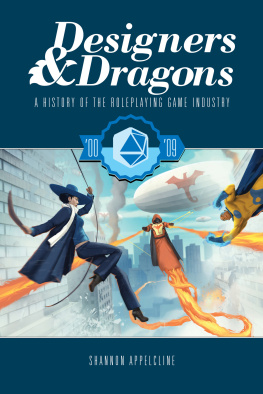
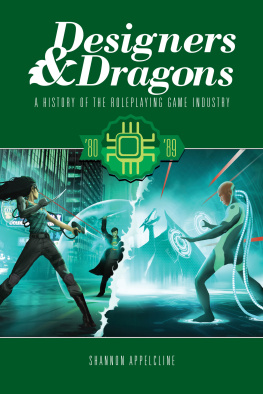

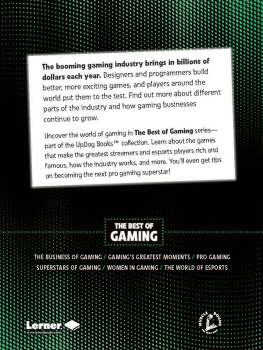
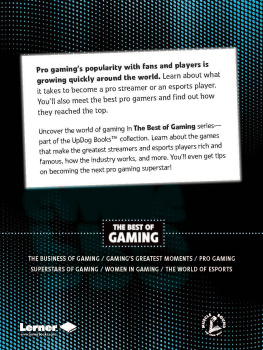
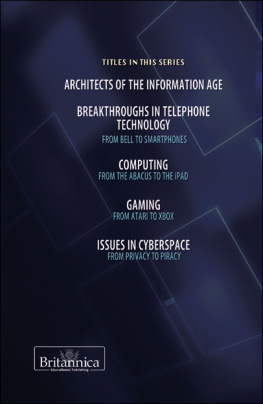

![Mark J. P. Wolf (editor) - Encyclopedia of Video Games: The Culture, Technology, and Art of Gaming [3 volumes]](/uploads/posts/book/279290/thumbs/mark-j-p-wolf-editor-encyclopedia-of-video.jpg)
